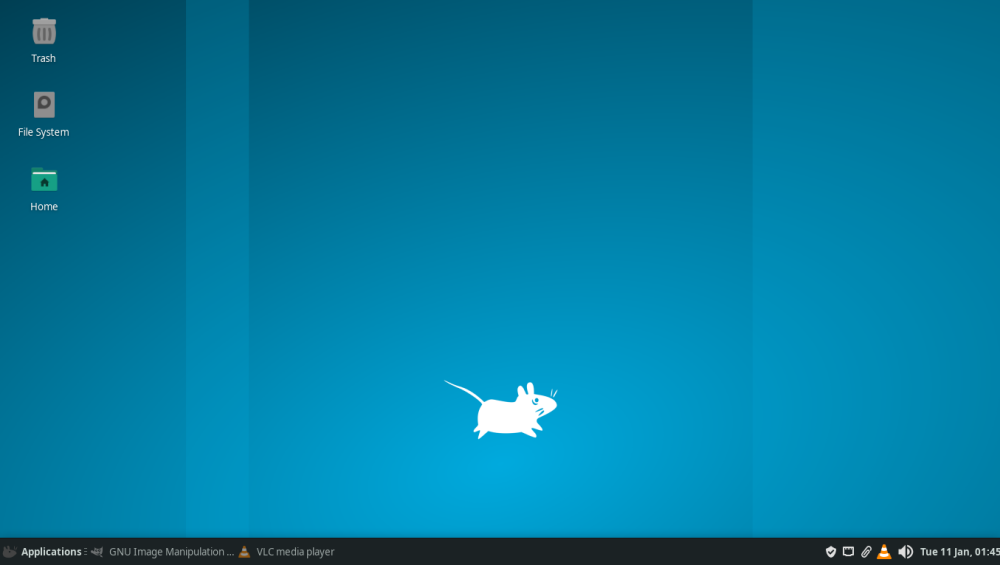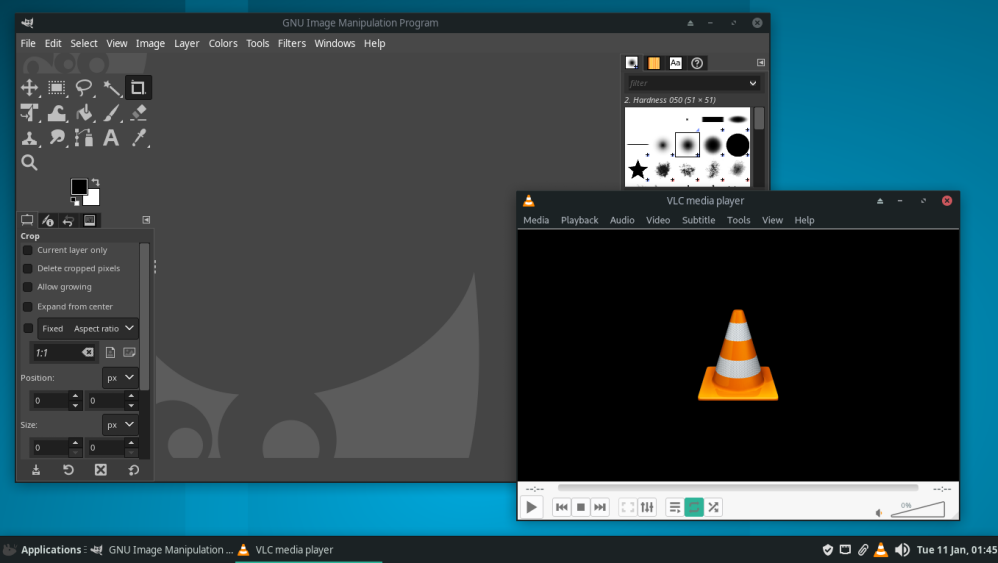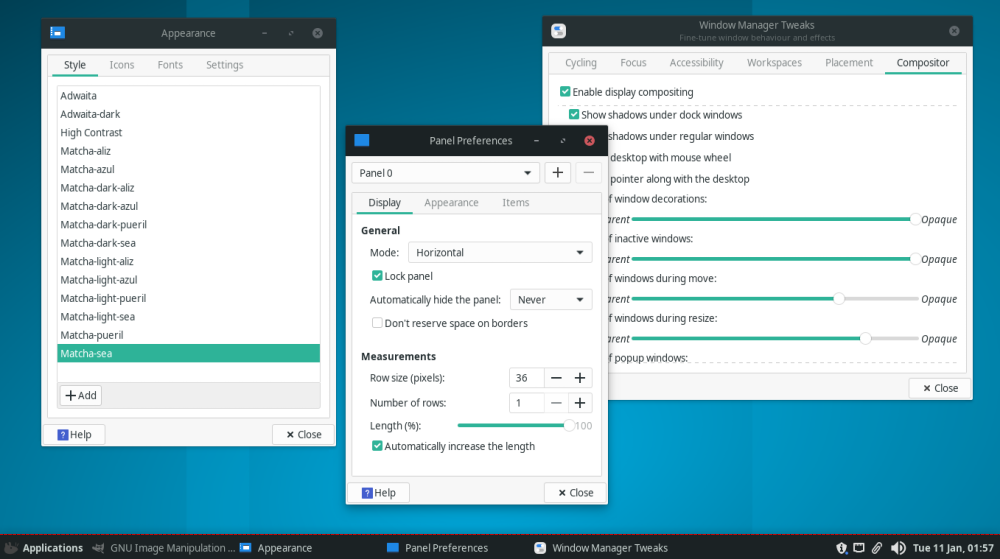Xfce is a rather humble desktop environment. It has been around for decades, but it has existed largely in GNOME's shadow as a more lightweight option that just so happens to also be based on GTK. Fewer developers work on Xfce and hence, there are fewer apps made with Xfce in mind.
Yet year after year, people continue to use Xfce. It receives updates, and numerous Linux-based operating systems ship Xfce as the default interface.
So, despite the other options available, why might you want to use Xfce?
1. Xfce Has Low System Requirements
Many Linux distributions choose Xfce for the simple reason that it can run easily on a wide range of hardware. But not only can Xfce function on an underpowered machine, but it also doesn't look like it's chugging along while doing so.
Where GNOME's animations may start to lag, or their absence may stand out if you choose to disable them, Xfce largely looks the same on a weak computer as it does on a more powerful one.
Xfce may not necessarily make your experience feel modern, but it will leave you feeling like you have your hands on a fully-functional machine. That can make all the difference if you're trying to revive a computer that struggles to load the Windows Start menu or buckles when opening more than one app at a time.
For the same reason Xfce is functional on older machines, it excels on modern ones—you can get the most out of your system resources. Your CPU or graphics card doesn't have to expend any energy on animations. Everything immediately snaps into place. Your computer's full power is going toward the task at hand, whether that's gaming, rendering video, or compiling code.
There's no reason to associate Xfce exclusively with older or underpowered devices. You can opt to use Xfce precisely because your custom-built rig is powerful, and you want to take advantage of it.
2. Xfce Isn’t Likely to Change Up on You
The Xfce desktop takes a fundamentally conservative approach to design. This is evident in how Xfce today doesn't look all that different from Xfce ten years ago. There are new features. The code in the background has been modernized in places. But if you last used Xfce in the mid-2000s and you're thinking of checking it out again, most functionality remains as you remember it.
This contrasts with two other popular desktop environments from the 1990s, GNOME and KDE, which have both undergone massive transformations.
There is also a distinction to be made here between Xfce and MATE, a desktop that seems similar on the surface. The latter is an effort to preserve GNOME 2, a version of GNOME gradually discontinued following the release of GNOME 3 in 2011.
MATE may gain new features here and there, but the effort is primarily to keep the code modern enough to preserve what already exists. Xfce isn't a preservation project. It's a desktop environment that from the beginning has simply had a conservative approach to what it wants to be.
3. Xfce Does Without Animations and Other Flair
By default, Xfce doesn't come with animations. For many of us, that can come as a detriment. For others, that's a benefit. Windows moving around the screen can cause headaches or other issues for people who are sensitive to such movement.
Animations can also introduce problems. Sometimes a desktop interface feels slow, but really, it's the animations that are lagging. Doing without animations entirely makes computer processes feel instantaneous. One moment your window isn't there. The next, there it is. No extra fluff in the middle to slow things down.
Many will remember that this used to be the way all computers were (and if you're nostalgic enough, you can tweak Xfce to look and feel like it's 1995).
But for a younger generation, desktop and mobile interfaces have always had animations. If this is you, try going without them for a bit and see what you think. And if you must have animations, it's still possible to enable them in Xfce by swapping out the default window manager for another.
4. Xfce Is Modular
There is an effort among free desktops to standardize across a certain set of tools: systemd, Wayland, PipeWire, and the list goes on. In some desktop environments, there is an officially supported way to do things and if you choose to go another route, you're on your own.
Xfce remains a traditional desktop environment. It manages your desktop interface but doesn't concern itself with what background system components you use. So if you're technical enough to have strong opinions about systemd or see no reason to switch away from X11, Xfce is a desktop environment that won't give you a hard time with your decision. You can mix and match components however you like.
On the flip side, if you do want to dabble with the latest technologies, you may have to wait longer, since as a desktop environment with fewer developers and a generally conservative orientation, you may sometimes find that Xfce doesn't yet support them.
5. Xfce Is Very Customizable
Some free desktops come with an opinionated approach to design. There is a way designers and developers intend for you to use their software, and it takes great effort to change the look and feel. GNOME and elementary OS Pantheon come to mind.
This isn't the case with Xfce. There is a default orientation to how components are arranged, but you're free to move them around however you like. You can create multiple panels, swap out the window list for a window menu or a dock, or ditch the app menu entirely. You can change the theme, switch up the icons, and play around with the fonts.
Xfce strikes somewhat of a middle ground between GNOME and KDE. You are free to tweak most aspects of your desktop, yet the system settings and context menus aren't particularly crowded or cluttered. If you find KDE overwhelming, Xfce offers a similar degree of freedom while still managing to look pretty basic.
6. Xfce Exists Under the Radar
Passions run high in the tech world, and this is no less true among the free software community. The arguments over which is better, GNOME or KDE, can be found in comments sections and social networks all over the web.
The arguments ten years later haven't even changed all that much from ten years before. While it's possible to tune those voices out, you can grow tired of regularly seeing people question your sanity for the way you like to use your computer.
In general, many people are inclined to dismiss Xfce as a serious contender. But this also means they're less likely to spend much time bashing it either. Xfce serves its role rather well, and people are generally content to leave it be.
As an Xfce user, you know desktop design is continually drifting away from the way you use your computer day in and day out, but that's okay. It's quieter in your neck of the woods. Let the passions run hot elsewhere.
There Is a Reason Xfce Has Stuck Around
While the world changes around it, Xfce has continued to find an audience and serve a niche. It's not pulling the free desktop forward, nor is it falling behind. It continues to exist for those who want a traditional desktop environment that doesn't use much of your computer's resources. And that's enough.
Yet Xfce isn't alone in this regard. There are still other lightweight Linux desktops that may serve you just as well.




